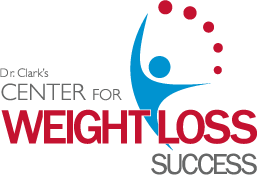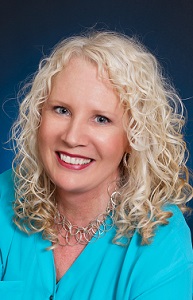I recently recorded a video designed to help you decide if Bio-Identical Hormone Replacement Therapy could help you regain what age is taking away. I’m including the transcription if you would rather read it! Contact us if you would like to have your labs done and schedule a consultation with me to discuss your options!
Today we’re going to talk a little bit about the hormone side of the whole thing. Hormone replacement is a controversial subject. I’ve named this “Age Healthier, Live Happier!” We’re going to talk about optimizing your hormones to accomplish both. You want to age healthier and you want to live happier. That’s something we all want to do. We can do that by optimizing hormones. What we’re talking about is testosterone and estrogen. Those are both for men and women. Testosterone is for men and testosterone and estrogen are for women. We’re going to talk about why it’s controversial but talk about why there shouldn’t be a controversy because this is something that can be helpful for many people. It can help protect you from some medical problems.
So a little bit about myself. I specialize in weight loss. I’ve done weight loss surgery for the past 25 years and medical weight loss for the last 15 years. I’m founder and Medical Director of the Center for Weight Loss Success in Newport News, VA. I also do hormone replacement therapy. I’m a certified practitioner of the BioTE Method of bio-identical hormone replacement therapy. Certainly if you’re considering HRT, you definitely need to consider bio-identical HRT. And, yes, I’m the Medical Director of the Center for Hormone Health and Wellness also in Newport News, VA.
We’re talking about testosterone as well as estrogen both for men and women. The best treatment plan is using subcutaneous hormone pellets. We’ll talk about why that is as we get through all this. These little hormone pellets are placed in the subcutaneous tissue typically in the hip area, in the fatty tissue there. It’s slowly absorbed and it can optimize hormone levels. This really is the optimal hormone replacement therapy for both testosterone and estrogen.
So what are hormones? We throw that term out there all the time. A hormone is a chemical messenger. This biochemical substance is made by a certain tissue in your body that’s released into the blood stream. Then it sends a message throughout the body. In tissues that have a receptor for that messenger are told to do something. Only the tissues with receptors to that hormone will respond to that hormone. It’s like the “lock and key” concept. It has to fit perfectly in order for this to work well. Hormones are one of the main tools your body uses to maintain homeostasis (balance). Hormone balance is a key concept.
When we talk about hormones there’s a big difference between bio-identical and synthetic hormones. This is just one example. I used progesterone as an example. Progesterone is a hormone. The top picture shows bio-identical progesterone. It means it looks exactly the way your body makes it. As opposed to a synthetic hormone, which is in the bottom half of the pictures. Synthetic progesterone is not even called progesterone because it’s kind of like progesterone. What’s the differentiation there? Bio-identical means it looks exactly the way your body makes it. Synthetic doesn’t look exactly like your body makes it. Typically here is the big thing: it’s money that we’re talking about. Anything that occurs in nature, bio-identical hormone, can’t be patented. If it can’t be patented, then typically drug companies can’t make a lot of money from it. Therefore, large drug companies will make a similar looking hormone but it’s not exactly the same. So, it’s not bio-identical. If they can make it kind of like the real hormone and do the things that hormone can do, they can patent it and make a lot of money. There’s the big difference. The problem is it looks a little bit different, as seen on the bottom picture. And because it looks different, the potential risk, potential side effects, how well it actually works, is going to be different. We need that “Lock and Key” concept. If it kind of works that can be a good thing if it’s actually helping. But if it actually causes more side effects or more risk, that’s where the problem comes in. We actually started looking overall at bio-identical hormones and their protective health benefits. Synthetic hormones typically raise your risk for a number of health problems. That’s the biggest difference right there. Bio-identical can protect you. Synthetic hormones typically don’t, and can potentially increase the risk of problems.
Again, we’re talking about sex hormones which are basically estrogen, testosterone, and progesterone. Progesterone is typically not something we want to replace a whole lot. A couple reasons to consider when replacing progesterone and we will talk about it. The common side effect is actually weight gain.
So if we’re using progesterone we will typically use the smallest dose possible. If we don’t need to use progesterone we try to avoid it. It’s a very safe hormone. You could take large doses. If you don’t get the weight gain side effect, then great! It actually can be helpful. We’re not going to spend a whole lot of time on it. All sex hormones are derived from cholesterol. We can’t live without cholesterol. Every single cell in our body needs it. Humans make three types of estrogen: estrone (E1), estradiol (E2), and estriol (E3). Men and women share all these hormones. Estradiol is the major one for estrogen. The only difference with the hormones is the absolute and relative amounts of them. We don’t want to get rid of any of these.
Hormones tend to wreak havoc! They especially wreak havoc if they get out of balance. Just a few facts about hormones. Every day about 3500 women in the US enter into menopause. The symptoms of menopause can begin up to 15 years earlier. The average age of menopause is somewhere between 50 and 51. The symptoms can sometimes last forever. Usually there’s a period of time where the symptoms are the worst. Any woman that’s gone through that can often tell you about it. Some women have minimal symptoms. Some have terrible symptoms. Males suffer from the same kind of thing. We call it andropause. Male hypogonadism (making less testosterone) is present in about 39% of males over 45 years old. It’s a significant percentage. As males age, the number goes up. Men lose about 3% testosterone production per year after the age of 35. This is also true for women. Testosterone really is your vitality, feel-good hormone.
We’ll talk about estrogen first. It’s the primary female hormone. The ovaries mainly make estrogen. The adrenal glands can also make some estrogen. When someone goes through menopause (which means your ovaries stop working), the adrenal glands can make a little bit of estrogen. Estrogen has many different functions throughout all your tissues. There are estrogen receptors widely distributed throughout your body. There wouldn’t be receptors on all these different tissues if you didn’t need them. The body needs these things. Receptors are there because there’s a message that needs to be received in your brain, breast tissue, bones, and reproductive organs. There are literally receptors all throughout your body and there are things those tissues need to do as well. We take away the messenger (estrogen) and the message is no longer received and tissues don’t respond as well. Estrogen is critical for sexual maturation and for the reproductive cycle. There are three types of estrogen. Estradiol is the most important one. We try to avoid estrone because the side effect is typically weight gain. Estrone levels go up after menopause. That’s why women notice is harder to control weight after menopause. Estradiol is very important during pregnancy.
Progesterone is a natural antagonist, or balance, to estrogen. If you have a uterus you want both progesterone and estrogen. They’ll balance each other out. It’s the yin and yang of the female hormone system. The relative balance determines either a state of physical and emotional well-being or unpleasant symptoms. Progesterone is mainly produced by the ovaries, but small amounts by the adrenal glands. Receptors are found throughout the body (brain, breasts, blood vessels, bones, and reproductive systems). Low progesterone levels put women at risk for fibroids, endometriosis, and uterine cancer.
Testosterone is your feel good hormone. We think of it as a male hormone. It’s not just a male hormone. In males it’s made by the testicles and the adrenal glands. In women it’s made by the adrenal glands and the ovaries. The ovaries make testosterone. We think about them as making estrogen. But the ovaries make testosterone. It’s critical to optimal functioning of many systems like sex drive, heart health, preservation of bone and muscle mass (metabolism, preventing osteoporosis), and sense of well-being. Some of the most dense receptors to testosterone are in your brain. That sense of well-being can help prevent depression. There are a lot of different things that it affects. The receptors wouldn’t be there in the tissues if there wasn’t something important that the hormone told them to do. Women produce a lot more testosterone than males do. The reason is that women are a lot more sensitive to testosterone. They don’t need nearly as much. Men make about 10X the amount that women do. Just like in men, production falls by 50% from age 20-40. As we age levels tend to go down. That’s true for both men and women. But for women it tends to happen a lot sooner. From the age of 20-40 these numbers fall down and continue to fall throughout menopause. Often during menopause the numbers are non-existent.
When we think about hormone replacement we often think about estrogen. For most women they probably need the testosterone because a lot of the symptoms that go along with menopause are actually symptoms of low testosterone, and not so much low estrogen. The big things with low estrogen are night sweats and hot flashes. Some of these things are very common: mood swings, lack of sleep, memory loss, decreased sex drive, depression, hot flashes, night sweats, weight gain, joint pain, migraines, and that hitting the wall later in the afternoon. Do all these things sound familiar? These are all symptoms of hormones out-of-whack. It’s mainly testosterone and also estrogen.
Hormone replacement therapy was fairly common 15-20 years ago when all of a sudden a huge monkey wrench was thrown into it. In 2003 the Women’s Health Initiative Trial (which was a huge trial with 50-60 thousand women over many years), came out and said for women who have hormone replacement therapy (they were talking about synthetic hormone), there is a 41% increase in stroke, 29% increase in heart attacks, 26% increase in breast cancer, twice the rate of blood clots, and 76% increase in Alzheimer’s Dementia. In 2003 almost everyone was taken off hormone replacement therapy. Unfortunately women were left with no alternative. Although, there has been a safe alternative available for years. When they started looking more closely at this data, this data is very real for synthetic hormones. That’s the difference. When they picked out the women who were treated with bio-identical hormones, they actually had a protective effect. They were less likely to have strokes, heart attacks, breast cancer, blood clots, and Alzheimer’s. But unfortunately once that big study came out; they lumped all hormone replacement therapy together and said it was bad. They should have said it was synthetic hormone replacement therapy that was bad. You should use it only for a short period of time. But bio-identical hormone replacement therapy can be protective.
A lot of unnecessary side effects and potential problems were related to oral synthetic estrogen therapy: increase breast and endometrial cancer, vaginal bleeding, headaches, nausea, blood clots, leg cramps, and gallstones. These are all related to the synthetic estrogen therapy in the pill form. So right away we find that synthetic in a pill form there could be a problem with. I’m going to digress for a second. If you think about it, anything we take in is going to pass from our intestinal track to the liver. The liver is very good at taking some of the things we take in (medications, hormones) and break them down. This is so the rest of your body doesn’t see it unless we give you very big doses. The only difference between a medication and a poison is the dose. Tylenol works great for a headache. A bottle of Tylenol can kill you. That’s just dosing. Pills often don’t work very well. Specifically for estrogen as well as testosterone don’t work well at all because of the dosing we have to give you so the rest of your body seeing it is pretty high. Then the side effects start going way up. Pills for both estrogen and testosterone don’t work well.
There are bio-identical patches and creams. Estradiol levels done as a patch or cream are better than pills but not as good as pellets. Your skin is meant to be a barrier. It’s meant to keep things out, not let things in. So, the creams don’t work very well. About 45% of people who use patches just don’t absorb much at all, so they don’t get very good levels. There are a lot of problems. You can have adhesive problems, it needs to be changed throughout the week, and weight gain. It’s not as much weight gain as the pills, but you really can’t get very good levels. They tend to be erratic levels. Creams tend to be messy. You have to rub it everywhere. You have to be careful you don’t get it on your clothes. Sometimes you have to rub it in twice a day. You can transfer it to others, like babies and pets. It’s messy and doesn’t get absorbed well.
With pellets we can get really good levels and they’re going to stay there until they’re gone. For most women, they’re going to last 3-4 months. For men, they can last 6 months or more. They are bio-identical. They look exactly the way your body made it, with both estrogen and testosterone. Bio-identical doesn’t mean it came from humans. We can take compounds from plants. We take compounds form yams and, through chemistry, make it look exactly the way your body makes it. Your body can’t tell whether it made it or not. It’s constantly available. It’s slowly absorbed directly, so it doesn’t go through the liver first. It goes through your bloodstream and your entire body sees it. You get a steady state of hormones as opposed to a rollercoaster ride effect. It’s safe and hassle free. You get individualized dosing. It lasts longer than other treatments. It does require a little procedure. This is not new. This has been around for a long period of time. It was developed in the 1930’s for women who had radical hysterectomies. It’s very commonly used in Europe and Australia. It’s just not so commonly used in the US. But they’ve been around for a long period of time. Sometimes you hear people say it’s not FDA approved. But certainly it’s FDA approved!! It’s testosterone and estrogen. It has to be FDA approved. There’s nothing else in the pellet but testosterone and estrogen. It’s the procedure that’s not FDA approved.
What do the studies show? There have been a lot of studies on pellets. We don’t see the increased risk of blood clots. We see a decrease in cardiovascular risk. We do not see an increased risk of breast cancer. These are not new studies. But they were overshadowed by the synthetic studies. It’s because the drug companies don’t make this stuff.
Osteoporosis doesn’t have a lot of symptoms unless you’re breaking bones all the time. It’s the thinning of the bones. Testosterone is the bone builder. With testosterone therapy we can even reverse osteoporosis. It can be improved by 8.3% per year with pellet therapy. That’s pretty amazing! We can literally reverse this!
It can also be helpful for arthritis. The receptors are in the bone and in the joints. The testosterone is doing something there. The testosterone and estrogen can stimulate those cells. They can provide cartilage protection in the joint space.
Breast cancer is one of the things that most women are concerned about. Synthetic hormones can increase the risk of breast cancer. Testosterone delivered by pellets does not increase risk of breast cancer, unlike the oral synthetics. Testosterone implants have shown less stimulation of breast tissue. Testosterone has actually been used in some studies to treat breast cancer. It’s been shown to reduce the size of tumors. It does not increase the risk of breast cancer.
We all fear Alzheimer’s disease as we get older. Statistically women get it almost 8:1 over men. Women on testosterone are 50% less likely to develop Alzheimer’s disease. If you think about it, that in itself can be a reason to consider treatment. Men with low T are 3X more likely to develop Alzheimer’s disease.
The bottom line is, not only can we fix a lot of symptoms, but we can actually be protected from some major health problems. Bio-identical HRT with pellets protects your heart, bones, breasts, and brain. These are things that don’t typically have a lot of symptoms until a problem is there. We can actually prevent some of these. It doesn’t mean you can’t get them. We can decrease the risk of some of these problems with HRT. We can fix a lot of symptoms: low energy, low libido, lack of sleep, and more. A lot of these things just fade away.
It does take a little procedure that takes only a minute and a half. The pellets are placed in the subcutaneous tissue of the buttocks. You can get a little swelling, bruising, or soreness. We numb that area up and make a little incision and place the pellets underneath the skin. You do need to be careful for a few days so the pellets don’t work themselves back out. Avoid strenuous exercise for 4-6 days after the insertion. It generally lasts 3-4 months in women and 4-6 months in men. Typically we will check the blood work in about 4-6 weeks after insertion to make sure we got the levels where they should be.
What are patients saying? They have increased energy levels, better sleep, restored interest in life, increased sex drive, reduced anxiety and depression, increased mental clarity, and decreased body fat and greater/stronger workouts. Testosterone is the muscle/bone builder.
If you have questions give us a yell at the Center for Hormone Health and Wellness. The website is:
www.CenterForHormoneHealthAndWellness.com
We’re at 645 J. Clyde Morris Blvd in Newport News. Our phone number is: 757-223-0940
Get your labs drawn. At your appointment we can go over them and see if you’re a candidate for HRT. Thank you for listening and hope to see you soon or at the office. Take care!






 Cat Keller has a wealth of experience in marketing, e-marketing, advertising and customer service and manages our Weight Loss Nutritional Store. She is always planning something fun and exciting. special events, discounts, giveaways – it’s never a dull moment. She is happy to help you with questions you may have regarding our products or services. Cat is a graduate of William & Mary, where she studied Government/Pre-Law and minored in Marketing.
Cat Keller has a wealth of experience in marketing, e-marketing, advertising and customer service and manages our Weight Loss Nutritional Store. She is always planning something fun and exciting. special events, discounts, giveaways – it’s never a dull moment. She is happy to help you with questions you may have regarding our products or services. Cat is a graduate of William & Mary, where she studied Government/Pre-Law and minored in Marketing.